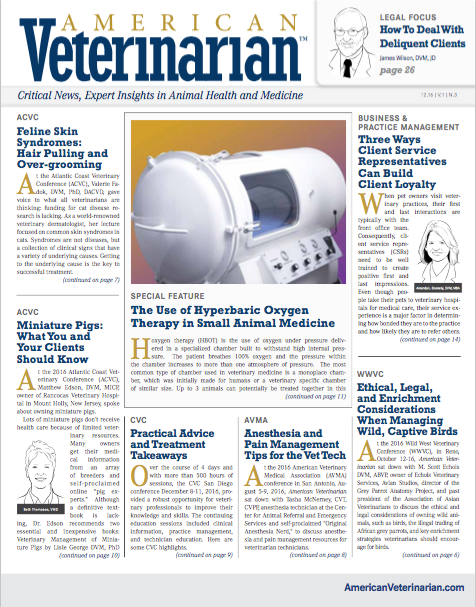Factors That Adversely Affect Reproductive Success in Mares
Obesity, insulin resistance, and dyslipidemia have long been associated with reproductive difficulties in women. According to an article published in the December 2016 issue of Veterinary Clinics of North America: Equine Practice, similar associations likely occur in pregnant mares.
Obesity, insulin resistance, and dyslipidemia have long been associated with reproductive difficulties in women. According to an article published in the December 2016 issue of Veterinary Clinics of North America: Equine Practice, similar associations likely occur in pregnant mares. This article reviewed current research on the possible impact of obesity, equine metabolic syndrome (EMS), and pituitary pars intermedia dysfunction (PPID) on reproductive physiology in mares.
Although exact prevalence numbers are lacking, obesity is believed to affect a surprisingly large number of horses. The author notes that “obesity is a highly prevalent condition in equids in developed nations (as in humans) and is associated with morbidity in both species”.
Obesity, however, is only part of the problem, as it is associated with a larger group of physiologic alterations known as EMS. EMS is understood to comprise obesity, systemic insulin resistance, and historical or current laminitis. Current evidence suggests that additional physiologic derangements, such as dyslipidemia, hypertension, altered levels of the adipokines leptin and adiponectin, and alterations of the reproductive cycle in mares may eventually be included among the metabolic changes associated with EMS.
Research has shown that alterations in levels of two important hormones, insulin and leptin, may contribute to reproductive complications in mares with EMS. EMS-associated insulin resistance (leading to hyperinsulinemia) may result in poorer reproductive performance and reduced fertility in horses, although the exact mechanism has not been fully described.
Additionally, percentage of body fat and overall body condition score correlate inversely with insulin sensitivity in mares, and correlate positively with the expression of inflammatory cytokines interleukin-1 and tumor necrosis factor alpha. Although further investigation in this area is needed, these alterations may be linked to age-related declines in fertility in older mares.
Similarly, increased leptin levels seem to promote insulin resistance and subsequent hyperinsulinemia in horses. Leptin is produced primarily by adipose tissue, and levels increase with body condition score. However, leptin levels fall in response to short-term feed restriction even without concurrent reductions in body condition score, suggesting that leptin levels can perhaps be modified through dietary manipulation.
PPID (also known as equine Cushing’s syndrome) is a common hormonal condition that can affect older horses and has also been associated with reproductive complications in mares. PPID is a slowly progressive disorder characterized by hyperplasia of the pars intermedia region of the pituitary gland. In healthy horses, dopamine (secreted from the hypothalamus) helps regulate secretion of hormones from the pars intermedia; but horses with PPID experience degeneration of hypothalamic dopaminergic neurons, which leads to reduced inhibition of the pars intermedia and increased release of its hormones.
Although the exact processes are not fully understood, PPID has been associated with changes in reproductive seasonality of mares, possibly due to the overall influence of the pars intermedia on seasonal functions (such as hair growth and shedding) in horses.
Fortunately, there are ways to help manage EMS and PPID in pregnant mares. Dietary modification and exercise (along with management of laminitis, if present) play important roles in the treatment of EMS. Providing a diet consisting primarily of grass hay (containing less than 10% non-structural carbohydrate on a dry-matter basis) and a ration that provides adequate trace minerals and vitamins is recommended for management of EMS. Offering continuous access to forage is also beneficial for broodmares receiving a modified diet as part of the treatment plan for EMS. Additionally, if the mare can safely exercise, as few as 30 minutes of daily exercise can help improve insulin sensitivity as part of a management plan.
Pergolide, a dopaminergic agonist that suppresses secretory activity of the pars intermedius, is the FDA-approved treatment for PPID in horses. However, administration during pregnancy (or when attempting to breed) can increase the risk of complications including altered cyclicity, prolonged gestation, premature placental separation, and suppressed prolactin secretion, which can adversely affect milk production. For broodmares with PPID, pergolide can be administered, but dosage modification is recommended. It may be wise to discontinue it 30 days before the expected foaling date, and start treatment 30 days after foaling to minimize the potential effect on length of gestation and milk production. Mares should also be monitored after foaling, to assess milk production. Horses with PPID may also exhibit insulin resistance, which can be improved by dietary modification. Calories should be derived primarily from fat and fermentable fiber, but minimized sugars, starches, and fructans.
As the equine population ages, and advances in medical care permit breeding well into the third decade of life, endocrine disorders such as PPID and EMS are likely to be encountered more frequently in equine practice. According to Dr. Bradford Bentz, owner of Bluegrass Equine Performace, “it is important to perform annual examinations to assess for diseases such as PPID”.
Dr. Todd-Jenkins received her VMD degree from the University of Pennsylvania School of Veterinary Medicine. She is a medical writer, and has remained in clinical practice for over 20 years. She is also a member of the American Medical Writers Association and One Health Initiative.
References:
- Burns TA. Effects of common equine endocrine diseases on reproduction. Vet Clin North Am Equine Pract. 2016;32(3):435-449.
